
Current Affairs is the most important area in all competitive exams. But the difficulty level is very high. That’s why; many aspirants get confused, how to select Current Affairs for Preparation of Competitive Examination? In this Post, Daily Current Affairs 6 June 2021, we have tried to cover each and every point and also included all important facts from National/ International news that are useful for upcoming competitive examinations such as UPSC, SSC, Railway, State Govt. etc.
Daily Current Affairs 6 June 2021
The Red Tourism promoted by China

The popularity of ‘red tourism’, which involves visiting places that are of historical and cultural importance for the party, is at an all-time high in the country, as the Chinese Communist Party celebrates its 100th anniversary in 2021.
In China, ‘red tourism’ refers to visiting sites which have a modern revolutionary legacy. Launched in 2004, the purpose of the project is to promote locations with historical and cultural significance to the ruling Communist Party’s history.
Nanhu Lake in East China’s Zhejiang, where the First National Congress of the Chinese Communist Party was held on a boat in 1921, and Mao Zedong’s birthplace Shaoshan have been witnessing huge footfall in recent times.
The ‘red tourism’ has been bringing in huge revenues which is fuelling China’s economic boom since the pandemic.
‘Red tourism’ seeks to spread awareness about the history of the Communist Party of China starting from its origins.
For instance, historical events such as the Long March, the military retreat undertaken by the Red Army to evade the pursuit of the Kuomintang in 1934, and the ascent to power of Mao Zedong are at the heart of the project.
NITI Aayog to release the SDG India Index & Dashboard, 2020-21
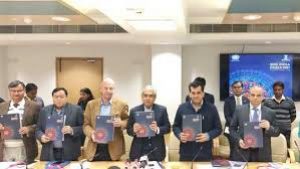
NITI Aayog recently launched the third edition of the Sustainable Development Goals (SDG) India Index and Dashboard 2020-21.
Kerala managed to retain the top spot this year in the SDG India Index. While Bihar was placed at the bottom of the government think tank’s SDG India Index.
Bihar and Jharkhand were the worst-performing states on the SDG India Index with scores of 52 and 56 respectively.
Mizoram, Haryana, and Uttarakhand were the top gainers in 2020-21 in terms of improvement in score from 2019, with an increase of 12, 10 and 8 points, respectively.
The SDG India Index is tabulated annually by NITI Aayog in order to evaluate the progress of states and union territories on the basis of social, economic and environmental criteria.
The results show that the country’s overall sustainable development goals score has improved by six points. It has gone up from 60 in 2019 to 66 in 2020-21.
Department for Promotion of Industry and Internal Trade Recognised 50K Startups
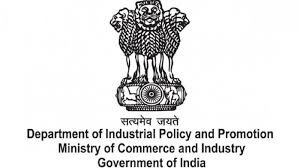
The Department for Promotion of Industry and Internal Trade (DPIIT) recognised as many as 50,000 startups.
Maharashtra, Karnataka, Delhi, Uttar Pradesh and Gujarat have the largest number of these entrepreneurs. Over 16,000 startups were recognized in the year 2020-2021.
With the launch of the Startup India initiative, recognized startups have now spread across 623 districts. Each State and UT has at least one startup.
5 Lakh jobs were reported by 48,093 startups with an average number of 11 employees per startup. About 1.7 lakh jobs were created by recognized startups in the 2020-2021 period alone.
The sectors that had the maximum registered startups were ‘Food Processing’, ‘Product Development’, ‘Application Development’, ‘IT Consulting’ and ‘Business Support Services’. The leadership teams of 45% startups have a women entrepreneur.
Funding opportunities to startups have been enhanced through the Fund of Funds Scheme with an overlay of INR 10,000 crore and the recently launched Startup India Seed Fund Scheme (SISFS) with an outlay of INR 945 crores.
Multiple programs are conceived and implemented by DPIIT -National Startup Awards, State Ranking Framework, Global VC Summit, Prarambh: Startup India International Summit.
Operational guidelines for PLI Scheme for telecom & networking equipment

The Department of Telecommunications (DoT) notified the Production Linked Incentive (PLI) Scheme with the objective to boost domestic manufacturing, investments and export in the telecom and networking products.
The PLI Scheme will be implemented within the overall financial limits of Rs 12,195 crore for implementation of the Scheme over a period of five years. For MSME category, financial allocation will be Rs 1,000 crore.
The objective of this PLI scheme is to make India a global manufacturing hub for telecom and networking products by boosting domestic manufacturing, investments and exports in the sector.
Small Industries Development Bank of India (SIDBI) has been appointed as the Project Management Agency (PMA) for the PLI scheme.
The scheme will be effective from 1st April, 2021. The support under the Scheme shall be provided for a period of five (5) years, i.e. from FY 2021-22 to FY 2025-26.
The PLI Scheme will be implemented within the overall financial limits of ₹ 12,195 Crores only over a period of 5 years. For MSME category, financial allocation will be ₹1000 Crores. The scheme will be effective from 1st April, 2021. The support under the Scheme shall be provided for a period of five (5) years, i.e. from FY 2021-22 to FY 2025-26.
The PLI Scheme will be implemented within the overall financial limits of ₹ 12,195 Crores only over a period of 5 years. For MSME category, financial allocation will be ₹1000 Crores.
Financial inclusion is a top priority for government

According to the Union Minister Anurag Singh Thakur statement, financial inclusion is a top priority for the government and that promoting financial education would help in realising the collective potential.
He was speaking at a virtual event to launch six modules of short films of Investor Education & Protection Fund Authority (IEPFA) titled ‘Hisaab Ki Kitaab’.
IEPFA comes under the corporate affairs ministry. The mandate of IEPFA is to build investor awareness among various stakeholders in the rural and urban areas.
Due to the digital global community, the urban-rural divide in India is blurring. Yet the behaviour change in the rural populace with respect to investment and long term financial planning needs to be triggered.
There are 6 short films/ modules of 5 minutes duration each highlighting the importance of budget, saving, importance of Insurance schemes, various social security schemes of the government etc. thus promoting Financial literacy.
Operation Sagar Aaraksha II conducted by Indian Coast Guard (ICG)

Indian Coast Guard (ICG) has been tirelessly engaged in fighting a major fire onboard the Chemical laden container vessel MV X-Press Pearl anchored off Colombo in coordination with Sri Lankan authorities.
The coordinated joint operation between India and Sri Lanka undertaken to respond to potential environmental danger has been christened as Sagar Aaraksha-II.
Indian Coast Guard ships, including the specialised pollution response vessel Samudra Prahari and offshore patrol vessel Vajra are standby in vicinity to respond to the developing situation.
The ICG being an active member of South Asia Co-operative Environment Programme (SACEP) remains committed to its responsibility of safeguarding of the ocean environment in the region.
The vessel when caught with fire was carrying 1486 containers containing chemical cargo classified as International Maritime Dangerous Goods (IMDG).
SAGE initiative and SAGE portal to support India’s elderly
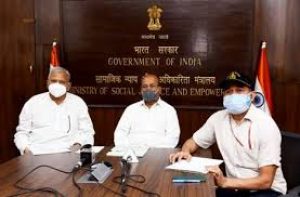
The Minister of Social Justice and Empowerment launched the SAGE (Seniorcare Aging Growth Engine) initiative and SAGE portal for elderly persons.
The SAGE portal will be a “one-stop access” of elderly care products and services by credible start-ups. The SAGE portal will be opened for applications from 5th June, 2021 onwards.
The start-ups will be selected on the basis of innovative products and services, which they should be able to provide across sectors such as health, housing, care centers, apart from technological access linked to finances, food and wealth management, and legal guidance.
The SAGE portal has been prepared and finalised in record time by Mr. Chandrasekhar Buddha, CEO, NEAT, M/o Education along with Dr. Elengovan, Assistant Innovation Director, M/o Education.
The Ministry of Social Justice & Empowerment will act as a facilitator for this scheme. A fund of uptoRs.1 crore as one-time equity will be granted to each selected start-up. An amount of Rs 100 crore has been assigned for the promotion of the silver economy. An allocation of Rs 25 crores has been made for the SAGE project in the current financial year i.e 2021-22.
Devika Project of Udhampur in Jammu & Kashmir
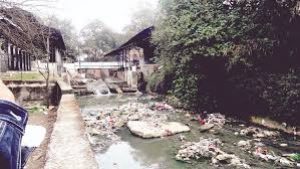
Minister of State for the Ministry of Development of North Eastern Region Dr Jitendra Singh reviewed the progress of Devika River Project of Udhampur in J&K and called for speedy execution of this model project.
Udhampur in J&K is also well known city for the Devika river. As it appears and disappears at many places, Devika is also known as Gupt Ganga.
The Devika river also holds great religious significance as it is revered by Hindus as the sister of river Ganga.
Jitendra Singh had also inaugurated the important Devika Bridge in Udhampur in June 2020. Apart from taking care of traffic congestion, the Devika Bridge was also meant to help smooth passage of Army convoys and vehicles.
Under the project, bathing “ghats” (places) on the banks of the Devika River will be developed, encroachments will be removed, natural water bodies will be restored and catchment areas will be developed along with cremation ground.
India and UK launched new workstream to promote industrial energy efficiency

At the 12th Chief Energy Ministerial (CEM), India and United Kingdom government have launched new workstream to promote industrial energy efficiency under the Clean Energy Ministerial’s (CEM) – Industrial Deep Decarbonization Initiative (IDDI) co-ordinated by UNIDO.
The IDDI initiative has been supported by Germany and Canada, with more countries expected to join soon.
The objective is to infuse green technologies and stimulate demand for low-carbon industrial material
Mr. Alok Kumar, Secretary, Ministry of Power highlighted that India is committed to cut emissions intensity per unit of GDP by 33 to 35% by 2030.
The commitment hinges on effective deployment of low carbon technologies in Energy Intensive Sectors like Iron & Steel, Cement and Petrochemicals.
China launched new generation meteorological satellite

China has successfully launched the first of a new generation meteorological satellite into planned orbit which will be used in the fields of weather analysis, environmental and disaster monitoring.
The satellite, Fengyun-4B (FY-4B), was launched by a Long March-3B rocket in the early hours from the Xichang Satellite Launch Centre in Sichuan Province.
The first of China’s new-generation meteorological satellites, FY-4B will be used in the fields of weather analysis and forecasting, and environmental and disaster monitoring.
Its observation range covers Asia, the central Pacific Ocean and Indian Ocean regions, so that the network will also greatly improve China’s forecast accuracy of disaster weather including typhoons and storms.
It is equipped with a rapid imager, improving measurement resolution to 250 meters from the geostationary orbit and accelerating scan imaging of the Earth.
Indigenous Chip-Off technique to retrieve encrypted data

Scientists at Central Forensic Science Laboratory (CFSL), Sector 36, have developed an indigenous chip-off technique for helping the investigative agencies to produce credible evidences against criminals in the trial courts.
Using the technique, data has been retrieved from a smart cell phone which had been locked with the finger prints of a person who had died by suicide.
The technique is divided in six parts including opening the device using heat and air combination to remove its back and front covers, battery screws, other connections, etc. to retrieve the motherboard.
The NAND flash memory is located on the retrieved motherboard/circuit board, using appropriate heat (disordering) and chemicals (adhesive removal), the memory chip is physically removed.
The removed chip is cleaned and/or reballed if necessary and the forensic image/dump of the chip is then acquired by using an imaging software and an adapter connecting it to the PC. The further analysis is conducted with the standard softwares at the laboratory.
The technique, developed by scientists Akhlesh Kumar, Bhushan Ghode and Khevna Maniar at CFSL-36, was published along with a case study in the International Journal of Engineering Science and Research Technology (IJESRT).
UNICEF reaches coronavirus vaccine supply agreement with Moderna

The United Nations Children’s Fund (UNICEF) reached an agreement with vaccine manufacturer Moderna to supply their international vaccination efforts against the Novel Corona virus.
The vaccines will be supplied to UNICEF’s COVID-19 Vaccines Global Access (COVAX) facility.
The vaccines are expected to be delivered in the final quarter of 2021 and will be allocated in a way that reflects the program’s value of equity in access.
UNICEF also noted that it has signed four other supply deals for Corona virus vaccines, including agreements with the Serum Institute of India, Pfizer, AstraZeneca and Human Vaccine.
Clean energy innovation to accelerate achieving the Paris Agreement Goals

About 23 countries’ governments have collectively launched bold new plans to catalyze action and spearhead a decade of innovation to drive global investment in clean energy research, development and demonstrations.
The goal is to make clean energy affordable, attractive and accessible for all this decade, to accelerate action towards the Paris Agreement and net zero pathways.
These countries are Austria, Australia, Brazil, Canada, Chile, China, Denmark, Finland, France, Germany, India, Italy, Japan, the Republic of Korea, Morocco, the Netherlands, Norway, Saudi Arabia, Sweden, the United Arab Emirates, the United Kingdom, the United States of America, and the European Commission (on behalf of the European Union).
Mission Innovation 2.0 is the second phase of the global Mission Innovation initiative, launched alongside the Paris Agreement at the 2015 COP21 conference.
Its members – collectively responsible for over 90% of global public investment in clean energy innovation – are committed to increase investment and collaboration to deliver the technologies needed to overcome the world’s most difficult climate challenges.
Achieving the Paris Agreement goals of limiting global warming to well below 2 degrees Celsius, compared to pre-industrial levels, requires huge leaps in energy innovation this decade.
Half of the global emissions reductions required to achieve national and global climate targets by 2050 depend on technologies that exist today, but are only at demonstration or prototype phase.
These technologies are not yet sufficiently effective or affordable to be deployed at scale, such as clean hydrogen, advanced battery storage or zero emission fuels.
WHO joins the UN Decade on Ecosystem Restoration

World Health Organization (WHO) on 5 June 2021, joined the UN Decade on Ecosystem Restoration, a partnership aimed at preventing, halting and reversing the degradation of our ecosystems and the diversity of life they sustain.
Along with the United Nations Environment Programme (UNEP), WHO has joined the partnership as a collaborating agency, the Food and Agriculture Organization of the United Nations (FAO) and a large number of partners.
Ecosystem restoration can significantly contribute to supporting health and well-being by helping to regulate infectious diseases, supporting food and nutrition security, and contributing to climate mitigation and adaptation.
Restoration also reduces the risk of disasters, while supporting livelihoods and healthy societies.
Safeguarding and restoring ecosystems globally will contribute to long-term social wellbeing and ecological resilience, while boosting green recovery efforts from the pandemic.
The UN Decade on Ecosystem Restoration is part of a series of collaborative efforts led by WHO that seek to strengthen cross-sectoral collaboration and engagement at the human, animal, plant and ecosystem interface, also known as One Health.
Blue-finned Mahseer out of IUCN red list
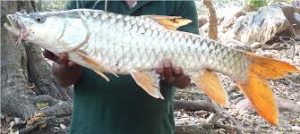
International Union for Conservation of Nature’s (IUCN) red listed of endangered species, Blue-Finned Mahseer has now moved to the ‘least concern’ status.
The group is involved in conservation of the blue-finned and golden mahseer for 50 years in Lonavala. However, the golden mahseer is still in danger of going extinct.
Around five lakh mahseer are bred at the Walvan Hatchery in Lonavala, where an artificial lake has been created.
It is here that the Blue-Finned and Golden species of Mahseer congregate. Once the eggs hatch, they remain in the lake for 4-6 months.
They are then handed over to various fisheries departments across the country, who in turn introduce them into lakes and rivers in their states.





